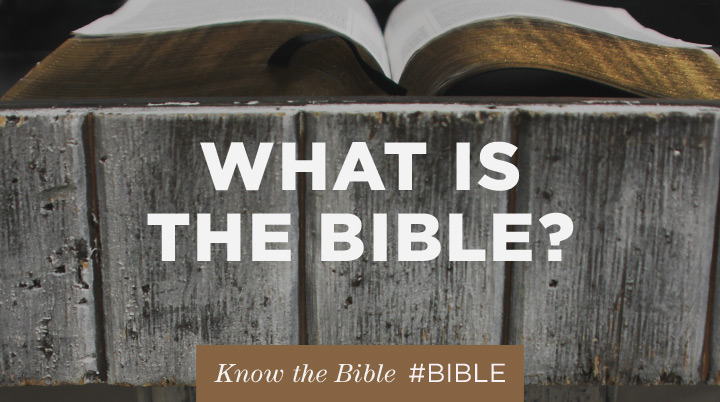Latest
-
Objections to the Christian Faith from the Unchurched and De-Churched
 Tue Dec 02, 2014
Tue Dec 02, 2014
by Resurgence -
Craig Groeschel: We Innovate for Jesus
 Tue Oct 14, 2014
Tue Oct 14, 2014
by Resurgence -
Mark Driscoll: Revelation
 Tue Oct 07, 2014
Tue Oct 07, 2014
by Resurgence -
RESURGENCE LEADERSHIP #034: JOHN PIPER, WHY I TRUST THE SCRIPTURES, PART 2
 Tue Sep 30, 2014
Tue Sep 30, 2014
by Resurgence -
Resurgence Leadership #033: John Piper, Why I Trust the Scriptures, Part 1
 Tue Sep 23, 2014
Tue Sep 23, 2014
by Resurgence

Archives
What is the Bible?

Why are there so many Bible translations, and how do we choose between them? Can the Bible be trusted as accurate? In this new blog series, Pastor Mark Driscoll offers a guided tour of how the Bible has been transmitted, translated, and trusted by Christians.
“The grass withers, the flower fades, but the word of our God will stand forever.”
—Isaiah 40:8
“For the word of God is living and active, sharper than any two-edged sword, piercing to the division of soul and of spirit, of joints and of marrow, and discerning the thoughts and intentions of the heart.”
—Hebrews 4:12
If I had to make an educated guess, I’d have to say that most of the people reading this post aren’t fluent in Hebrew, Greek, or Aramaic. Neither am I. The problem is, those are the original languages of the Bible, which means in order to understand God’s word to us, we need a translation.
Fortunately, in just the last few decades or so we’ve seen a number of English Bible versions arrive, and they’re just a few mouse clicks away or as near as a bookstore. Every year the Christian Booksellers Association publishes a list of the top Bible translations. Here are the 2012 results:
Top Bibles (unit sales)
- New Living Translation
- New International Version
- King James Version
- New King James Version
- English Standard Version
- Common English Bible
- Holman Christian Standard Bible
- New American Standard Bible
- Reina Valera 1960
- New International Readers Version
It’s one thing to produce a list of statistical results about Bible translations; it’s another to evaluate which translations are the best.
Before I get started, let’s clear a few things up.
Some people may wrongly dismiss portions of this series as academic nitpicking. My intention isn’t to nitpick, but to accurately present and understand God’s word. The Scriptures exist for many reasons, and chief among them is the revelation of the person and work of our great God and Savior, Jesus Christ. Jesus taught that he is in fact the very thread that weaves all of Scripture together (Matt. 5:17; Luke 24:27; 44-45; John 5:39).
Having the best possible translation of Scripture is important because it helps us to hear God most clearly and therefore know Jesus most intimately. By way of analogy, if Jesus were to call us on our cell phone, we would want to have the best possible coverage so as to hear him most clearly. In some ways, a good Bible translation is like good cell phone coverage—it offers the most effective communication.
What is the Bible?
The New Testament speaks of the Old Testament as “Scripture,” translated from the Greek word graphe meaning “writing,” while the word bible comes from the Greek word for book.
Holy Bible means the “Holy Book.” It contains sixty-six separate books (thirty-nine Old Testament and twenty-seven New Testament), written in three languages (Hebrew, Greek, and a bit in Aramaic), over a period of more than a thousand years, by more than forty authors of varying ages and backgrounds who wrote on three continents (Asia, Africa, and Europe).
The Scriptures exist for many reasons, and chief among them is the revelation of the person and work of our great God and Savior, Jesus Christ.
Authors of the Bible include kings, peasants, philosophers, fishermen, poets, statesmen, and scholars. The books of the Bible cover history, sermons, letters, songs, and love letters. There are geographical surveys, architectural specifications, travel diaries, population statistics, family trees, inventories, and numerous legal documents. It covers hundreds of controversial subjects with amazing unity. It’s also the best-selling book of all time and is now available in nearly three thousand languages.
The Old Testament was written on papyrus—a form of paper made out of reeds; the New Testament was written on parchment (prepared animal skins). Because both forms of documents easily degrade under hot and dry conditions, it is providential that we have so many copies of ancient manuscripts. Incidentally, the various chapter and verse divisions in the Bible were not part of the original books. A lecturer at the University of Paris created the chapter divisions in 1228. Its current chapter and verse divisions were not fully developed until 1551.
What do Christians believe about the Bible?
It’s no surprise that Christians and non-Christians have radically different views of Scripture. Christians claim the Bible is the word of God, while non-Christians disagree. Unless the Holy Spirit illuminates the understanding of a non-Christian, this differing view of Scripture will always be the case. As 1 Corinthians 2:14 puts it: “The natural person does not accept the things of the Spirit of God, for they are folly to him, and he is not able to understand them because they are spiritually discerned.”
The Bible is the best-selling book of all time and is now available in nearly three thousand languages.
At the heart of the Christian view of the Bible is the concept of verbal plenary inspiration. There’s a lot packed into those three words, so let me explain what it means and what it doesn’t mean.
Verbal plenary inspiration is a way of saying that God the Holy Spirit inspired not only the thoughts of Scripture, such as the ideas, but the very words and details of Scripture.
Jesus himself said: “For truly, I say to you, until heaven and earth pass away, not an iota, not a dot, will pass from the Law until all is accomplished” (Matt. 5:18). The ESV Study Bible says this about the passage: “Jesus confirms the full authority of the OT [Old Testament] as Scripture for all time … even down to the smallest components of the written text: the iota is the smallest letter of the Greek alphabet … and the dot likely refers to a tiny stroke or a part of a letter used to differentiate between Hebrew letters.”
God authored the entire Bible, down to every word. But God didn’t figuratively sit down at a desk, take out a pen, and start writing down the Bible. Instead, he inspired writers throughout history to write down Scripture. These human authors retained their own style, voice, perspective, and cultural distinctives, yet God uniquely inspired them to write down what he wanted recorded with complete accuracy. This is different from, say, the Qur’an or Book of Mormon, which adherents of Islam and Mormonism claim was the result of someone taking dictation.
What does the Bible say about itself?
The doctrine of verbal plenary inspiration is simply our way of trying to express what the Bible says about itself. Here are a few of the deeply meaningful insights that Scripture reveals about itself:
- Given by the inspiration of God — 2 Timothy 3:16; 2 Peter 1:19–21
- The very words of God — 1 Thessalonians 2:13
- All we need to know God — Luke 16:29, 31
- A perfect guide for life — Proverbs 6:23
- Pure — Psalm 12:6; 119:140
- True — Psalm 119:160; John 17:17
- Trustworthy — Proverbs 30:5–6
- Perfect — Psalm 19:7
- Effective — Isaiah 55:11
- Powerful — Hebrews 4:12
- Nothing should be taken from or added to it — Deuteronomy 4:2; 12:32
- For everyone — Romans 16:25–27
- To be obeyed — James 1:22
And here are some poetic images from Scripture about Scripture:
- Sweet like honey — Psalm 19:10
- A lamp to guide our life — Psalm 119:105
- Food for our soul — Jeremiah 15:16
- A fire that purifies and a hammer that breaks us — Jeremiah 23:29
- A sword — Ephesians 6:17; Hebrews 4:12
- A seed for salvation planted in us — James 1:21
- Milk that nourishes us — 1 Peter 2:2
By its own declaration, the importance and trustworthiness of Scripture can hardly be overstated. From God to you, the Bible remains a wonderful book that is also reliable and relevant.
This is the first installment in a blog series by Pastor Mark Driscoll that will provide a guided tour of topics such as how the Bible was transmitted, principles for interpreting the Bible, and misconceptions about the Bible.
Join us next Thursday for the second installment in this series.